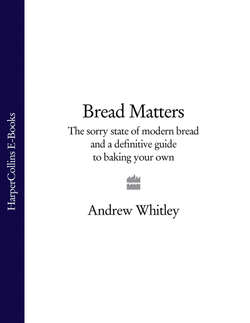Читать книгу Bread Matters: The sorry state of modern bread and a definitive guide to baking your own - Andrew Whitley - Страница 51
Proving baskets
ОглавлениеKnown as pannetons in French and Brotformen in German, these are commercially available but rather expensive. The French type consists of a wicker basket with a linen liner stitched inside. The German ones, most often associated with rye bread, are round or oblong and made from bent willow cane or wood pulp; they are not lined with fabric, so the dough takes on the ribbed profile of the basket. Both types of basket must be dusted with flour to prevent the dough sticking. They are not generally washed between uses and gradually acquire more of a non-stick character.
You can make your own proving basket using a piece of linen or thick, unbleached calico and a cheap wicker basket. Do not be tempted to use a tea towel unless it is made of fairly thick linen. It is important that the fabric has an open weave, so that air can penetrate to conduct moisture from the surface of the dough. For this reason, light cotton and muslin are not suitable. Nor is a plastic or steel bowl, because moisture from the warm dough will condense on the surface and make the dough stick to the fabric. In an attempt to save money, I once bought a load of plastic basins to make my own proving baskets when demand for the bakery’s French Country Bread began to rocket. I drilled dozens of holes in the basins to create an air flow to the dough, but it still tended to stick to the liner fabric. You may notice the same effect if you try to make a proving basket out of a plastic colander and a tea towel.
